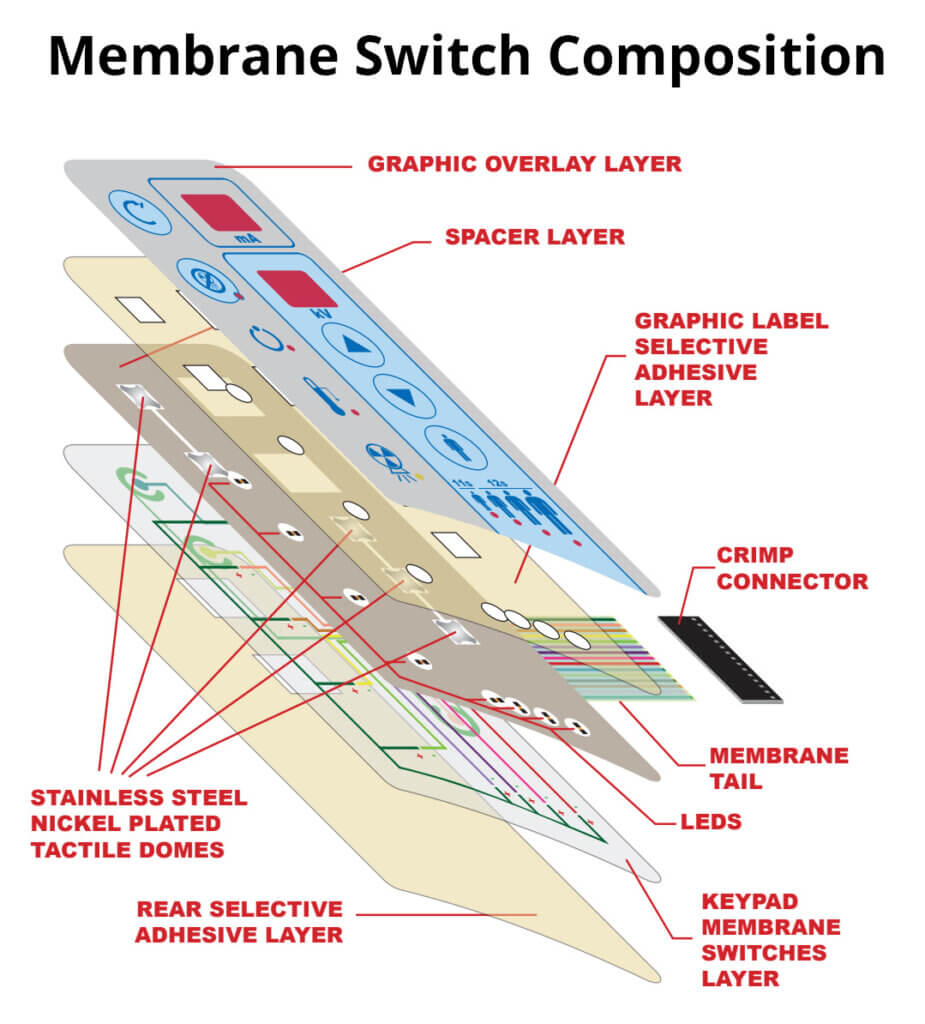Comprehending the Value of Membrane Switch Over in Modern Electronic Devices
Membrane switches are essential components in contemporary electronic tools. They provide a mix of capability and layout that boosts individual interaction. Their resilient and lightweight nature makes them appropriate for numerous applications. As sectors evolve, the demand for modification and progressed features grows. Understanding exactly how membrane layer switches add to development exposes their significance fit the future of electronic devices. What lies ahead for this innovation?
The Basics of Membrane Switch Modern Technology
Although commonly overlooked, membrane button innovation plays an important function in the contemporary electronic devices landscape - membrane switch. These devices, made up of numerous layers, function as user interfaces for different digital items, ranging from household home appliances to medical devices. A typical membrane layer button contains a graphic overlay, a spacer layer, and a circuit layer, which are meticulously assembled to produce a useful interface.When stress is put on the overlay, the circuit layer is finished, allowing signals to be transferred to the tool. This modern technology is understood for its versatility, allowing modification in functionality, shape, and layout to fulfill specific customer needs. In addition, membrane layer buttons are slim and light-weight, making them suitable for applications where area is a costs. Their durability and resistance to environmental aspects better boost their appeal, ensuring they can stand up to extreme problems while preserving performance. On the whole, membrane layer button innovation is essential to producing reliable and easy to use digital tools

Key Benefits of Membrane Layer Changes
Membrane layer changes offer several vital benefits that make them a preferred choice in various electronic applications. Their layout permits a portable type variable, allowing producers to create smooth and light-weight gadgets. Furthermore, membrane layer switches are immune to dust, moisture, and chemicals, which improves their sturdiness and longevity sought after atmospheres. The tactile comments supplied by these switches can boost individual experience, making them intuitive and easy to operate.Furthermore, membrane layer switches can be customized with varied graphics and colors, permitting special branding chances. The production process is normally cost-effective, especially for high-volume production, as it minimizes assembly time and simplifies design. Ultimately, membrane layer switches call for minimal maintenance, adding to reduced total operational expenses. These advantages highlight their expanding popularity in modern-day electronics, where reliability and user-friendly user interfaces are important.

Applications Throughout Different Industries
The convenience of membrane layer changes enables their prevalent adoption throughout numerous industries. In the clinical field, they are typically used in analysis devices and patient surveillance systems, supplying a long lasting interface immune to pollutants. The automobile industry uses membrane layer switches for dashboard controls, improving user experience with sleek layouts that hold up against extreme conditions. In consumer electronic devices, they function as control board for devices such as microwaves and coffee machine, offering a straightforward interface that is easy to tidy. The aerospace sector utilizes membrane layer switches in cabin controls, where reliability and area performance are vital. Furthermore, the commercial field leverages these switches in equipment and control systems to guarantee durable procedure in demanding atmospheres. This wide variety of applications highlights the flexibility of membrane buttons, making them indispensable components in improving capability and user interaction throughout varied technological landscapes.
Modification and Style Adaptability

Future Patterns in Membrane Change Growth
Emerging trends in membrane button growth indicate a growing emphasis on enhanced capability and combination with smart innovations. As consumer demand for extra advanced electronic gadgets increases, producers are concentrating on creating membrane changes that not just offer basic operational functions however likewise include functions like touch sensitivity, backlighting, and haptic feedback.Furthermore, advancements in materials are anticipated to enhance durability and ecological resistance, making membrane changes ideal for varied applications in industries such as healthcare, vehicle, and customer electronic devices. The assimilation of capacitive touch modern technology is most likely to end up being more common, enabling for sleeker layouts and improved customer interfaces. membrane switch.Additionally, the rise of the Internet of Points (IoT) is motivating the advancement of membrane visit their website layer switches that can connect wirelessly with various other devices, boosting interconnectivity. On the whole, the future of membrane button modern technology appears appealing, driven by development and the quest of user-friendly solutions
Often Asked Concerns
Exactly How Do Membrane Layer Changes Compare to Traditional Mechanical Switches?
Membrane buttons, being extra space-efficient and providing a smooth design, comparison with conventional mechanical buttons that give tactile comments. The previous frequently include adjustable graphics, while the last normally ensure resilience and integrity in various applications.
What Materials Are Commonly Made Use Of in Membrane Layer Change Manufacturing?
Membrane layer switches are commonly produced using products such as polyester, polycarbonate, and printed conductive inks. These materials offer adaptability, sturdiness, and visit responsiveness, making them ideal for various applications in electronic devices and individual interfaces.
Can Membrane Changes Be Repaired or Reused?
Membrane layer buttons can usually be fixed, particularly if minor problems arise, such as sticky failure or surface area damages. Nevertheless, complete reuse is normally restricted as a result of put on and potential deterioration of products in time.
Exactly How Do Environmental Elements Influence Membrane Switch Over Performance?
Environmental aspects, such as moisture, temperature level, and direct exposure to chemicals, greatly affect membrane switch efficiency. Severe problems can lead to degradation, influencing responsiveness and durability, eventually jeopardizing the functionality of the tool in numerous applications.
What Is the Normal Lifespan of a Membrane Layer Switch?
The common lifespan of a membrane button generally ranges from 1 to 5 million actuations, depending on elements such as use frequency, environmental problems, and the materials made use of in Our site manufacturing, affecting longevity and efficiency durability. A typical membrane button consists of a visuals overlay, a spacer layer, and a circuit layer, which are thoroughly put together to create a functional interface - membrane switch.When pressure is applied to the overlay, the circuit layer is completed, enabling signals to be sent to the tool. The responsive responses supplied by these buttons can enhance customer experience, making them user-friendly and simple to operate.Furthermore, membrane buttons can be tailored with diverse graphics and colors, permitting for unique branding possibilities. As customer need for extra sophisticated electronic devices increases, suppliers are focusing on producing membrane layer switches over that not only offer fundamental operational duties yet also include attributes like touch sensitivity, backlighting, and haptic feedback.Furthermore, advancements in materials are expected to improve durability and environmental resistance, making membrane layer switches over ideal for varied applications in sectors such as healthcare, auto, and customer electronic devices. The assimilation of capacitive touch modern technology is most likely to become much more prevalent, permitting for sleeker layouts and enhanced user interfaces.Additionally, the rise of the Web of Things (IoT) is motivating the advancement of membrane layer changes that can communicate wirelessly with various other gadgets, enhancing interconnectivity. Membrane layer buttons, being extra space-efficient and using a smooth style, contrast with typical mechanical buttons that give responsive comments
Comments on “Exploring membrane switch applications in extreme environments”